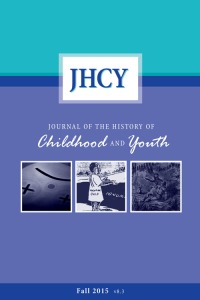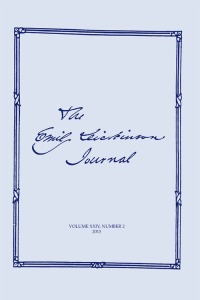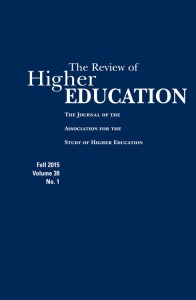Late last year, the Journal of the History of Childhood and Youth published a special issue which took a look at the thorny subject of child death. Kathleen Jones organized a discussion of young people and death at the 2013 conference for the Society for the History of Children and Youth, the sponsoring organization for the journal. This event drove the creation of the special issue. Jones, Associate Professor of History and Director of Graduate Studies at Virginia Tech, served as guest editor for the issue with Vassar College Associate Professor of History and Director of Victorian Studies Lydia Murdoch and Tamara Myers, Associate Professor of History at the University of British Columbia. The trio provided collective answers for a Q&A session.
This issue emanated from 2013 conference panel. How gratifying is it to see some of that work published?
 Immensely gratifying. For the seventh biennial meeting of the Society for the History of Children and Youth, we proposed a group of panels about child death. The conference theme, “Space,” shaped our panels – the papers explored the places of death, the ways that space and place of death shaped the cultural meanings attached to dead children. Publication gave us the opportunity to collect ideas from the conference papers, expand and develop them, and, most importantly, share them widely. The opportunity to publish them also reinforced for us how important, and yet still relatively understudied, the responses to the deaths of children are for the history of childhood. Death provides a cultural frame for the value attached to children. It’s a point Viviana Zelizer made so clear over thirty years ago in her discussion of life insurance for children (Pricing the Priceless Child, 1985) It’s a perspective that the journal publication now invites others to build from and add new understandings to in the future.
Immensely gratifying. For the seventh biennial meeting of the Society for the History of Children and Youth, we proposed a group of panels about child death. The conference theme, “Space,” shaped our panels – the papers explored the places of death, the ways that space and place of death shaped the cultural meanings attached to dead children. Publication gave us the opportunity to collect ideas from the conference papers, expand and develop them, and, most importantly, share them widely. The opportunity to publish them also reinforced for us how important, and yet still relatively understudied, the responses to the deaths of children are for the history of childhood. Death provides a cultural frame for the value attached to children. It’s a point Viviana Zelizer made so clear over thirty years ago in her discussion of life insurance for children (Pricing the Priceless Child, 1985) It’s a perspective that the journal publication now invites others to build from and add new understandings to in the future.
In the introduction, it was mentioned that response to the original panel was overwhelming. Why do you think that this area has so much interest?
As the history of childhood has developed in the last thirty years or so, the field has been shaped by questions about agency – questions about what role children played in the past, about what they experienced as they grew up, and about how adults interpreted those experiences and used childhood for political purposes. Getting away from seeing the child as “victim” or “object” has been a part of the rationale for the history of childhood and youth. The same perspective permeates new studies of child death. Earlier histories tended to focus on the question of whether parents developed affective bonds with children and mourned those who died in periods or places with high child mortality. Following Linda Pollock (Forgotten Children: Parent-Child Relations from 1500 to 1900, 1983), numerous scholars have demonstrated that parents deeply mourned the death of children in the past, leading us to explore new types of questions. Whereas death has often been blended into a history of medicine and disease or the history of mourning rituals, the conference theme opened the possibility of exploring the political, social, cultural, and emotional issues associated with risk and death, whether the death of one or of many children. Historians have shown how adults used the threat of death to discipline the young, and how state interventions developed at moments of heightened awareness of child endangerment. At the same time, historians of child death have tracked the emotional loss attached to the death of a child and the ways death has been rendered meaningful for children as well as for adults at both a cultural and a personal level.
Interest was also generated because of child death’s contemporary relevance and our (western) perspective that any young death is premature and demands explication. While death in childhood is an unusual occurrence in many cultures in 2016, it is an all-too-prominent part in others where disease and violence relentlessly attack the young. Where growing into adulthood is the norm, representations of dead and dying children pull at heartstrings, making those images powerful tools for political agendas. Current interest in the history of child death can’t be divorced from the powerful imagery in these contrasting life experiences of children and their prospects for growing into adulthood.
How hard was it to choose what would end up in the journal issue?
Our goal for the issue was to include articles that looked at death in different times and places; we were fortunate to work with panelists who brought such diversity to the conference. In identifying a table of contents that would ensure an issue with broad appeal we also invited additional contributions – notably David Pomfret’s reflective essay on the state of the field. But the underlying theme in the issue was always one of meaning. When a child dies, how is that death explained? When many children die in similar circumstances, how and why are the deaths given a purpose? We think the articles in this collection demonstrate the historical contingency of answers to questions about how we understand and process child death and the ways child death shape the life experiences of children.
We also wanted to show with the issue how researchers are approaching issues of childhood and death from a variety of methodological perspectives. The essays in the volume defy easy categorization, blending methodologies from cultural and social history, oral history, visual arts and material culture, archival studies, and social work. Taken together, though, they suggest the many opportunities for further research on the history of child death.
What did you three learn from working on the issue?
One of most important takeaways from editing this issue is how little we know about the experience of and the meanings attached to child death. The articles here only begin to scratch the surface and leave us with more questions than answers: How did young people themselves understand death? What were the ways that death was made real to them? How did they weave the prospect of death into expectations of their adulthood? We are particularly interested in how answers to these questions changed over time, or in different contexts. For historians of childhood, the role children played in history may well be found in the ways they balanced the prospect of the future with the possibility of death.
How important will it be to revisit this topic in the future?
We hope the experiences of death in childhood and the meanings adults and children give to those experiences will be revisited often as we continue to write the history of children and youth. The articles in this issue remind us that even though death is our universal fate, how we die and how the living are affected by death cannot be captured by that one word. The meanings we attach to death are bounded by the many adjectives we call on to distinguish one death from another… violent death, self-inflicted death, accidental death, epidemic death, slow death from disease or neglect. The articles in this issue begin to address the complexity of this multifaceted word. We expect that scholars will build from these articles to explore the range of experiences, emotions, and meanings associated with child death, and show us the many ways the deaths of some children have shaped the lives of others.

 What is one surprising thing you have found in the transition?
What is one surprising thing you have found in the transition? Immensely gratifying. For the seventh biennial meeting of the Society for the History of Children and Youth, we proposed a group of panels about child death. The conference theme, “Space,” shaped our panels – the papers explored the places of death, the ways that space and place of death shaped the cultural meanings attached to dead children. Publication gave us the opportunity to collect ideas from the conference papers, expand and develop them, and, most importantly, share them widely. The opportunity to publish them also reinforced for us how important, and yet still relatively understudied, the responses to the deaths of children are for the history of childhood. Death provides a cultural frame for the value attached to children. It’s a point Viviana Zelizer made so clear over thirty years ago in her discussion of life insurance for children (Pricing the Priceless Child, 1985) It’s a perspective that the journal publication now invites others to build from and add new understandings to in the future.
Immensely gratifying. For the seventh biennial meeting of the Society for the History of Children and Youth, we proposed a group of panels about child death. The conference theme, “Space,” shaped our panels – the papers explored the places of death, the ways that space and place of death shaped the cultural meanings attached to dead children. Publication gave us the opportunity to collect ideas from the conference papers, expand and develop them, and, most importantly, share them widely. The opportunity to publish them also reinforced for us how important, and yet still relatively understudied, the responses to the deaths of children are for the history of childhood. Death provides a cultural frame for the value attached to children. It’s a point Viviana Zelizer made so clear over thirty years ago in her discussion of life insurance for children (Pricing the Priceless Child, 1985) It’s a perspective that the journal publication now invites others to build from and add new understandings to in the future.
 At first glance, medical diagnosis might seem like a cut-and-dry topic. However, much more goes into this aspect of medical practice than most people think. Annemarie Jutel, co-editor of
At first glance, medical diagnosis might seem like a cut-and-dry topic. However, much more goes into this aspect of medical practice than most people think. Annemarie Jutel, co-editor of  NS: In 2013, the Editor of South Central Review, Joe Golsan, was visiting the Victoria and Albert Museum, in London. That year, there was a special, interactive exhibit that featured graphic narratives and it got him thinking about how the journal could engage these kinds of stories. The journal is devoted to the intersection of culture and academia, and this special issue is a great manifestation of such dedication. After this experience at the Victoria and Albert, Joe spoke to Nicholas Lawrence, the journal’s Managing Editor, who got in touch with me. Much of my research and teaching revolve around graphic narrative, and when Nick indicated that there was a desire for South Central Review to assemble a special issue on graphic narrative, I thought it was a fantastic idea.
NS: In 2013, the Editor of South Central Review, Joe Golsan, was visiting the Victoria and Albert Museum, in London. That year, there was a special, interactive exhibit that featured graphic narratives and it got him thinking about how the journal could engage these kinds of stories. The journal is devoted to the intersection of culture and academia, and this special issue is a great manifestation of such dedication. After this experience at the Victoria and Albert, Joe spoke to Nicholas Lawrence, the journal’s Managing Editor, who got in touch with me. Much of my research and teaching revolve around graphic narrative, and when Nick indicated that there was a desire for South Central Review to assemble a special issue on graphic narrative, I thought it was a fantastic idea. It is immensely important. The list of inspiring essays and articles that have been published in T&C is a long one, and since we are interested in bringing the study of politics and the historical study of technology closer together, it is really an ideal outlet; it also brings our work to the attention of a new audience and we hope this piece can be part of an increased dialogue on questions of technology and global politics.
It is immensely important. The list of inspiring essays and articles that have been published in T&C is a long one, and since we are interested in bringing the study of politics and the historical study of technology closer together, it is really an ideal outlet; it also brings our work to the attention of a new audience and we hope this piece can be part of an increased dialogue on questions of technology and global politics.

You must be logged in to post a comment.